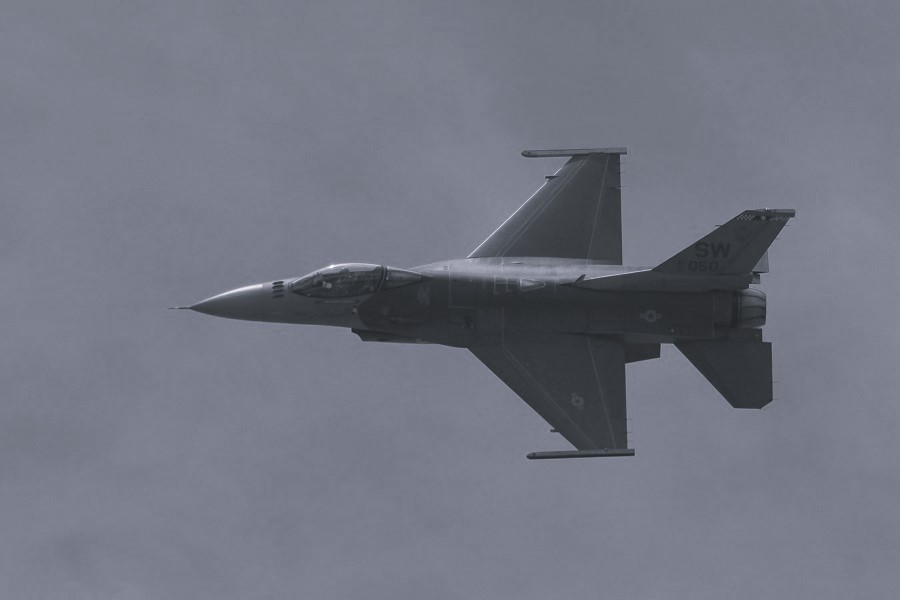As Kyiv’s counteroffensive to liberate Russian-occupied territories slowly advances in Ukraine’s east, the drone war continues to escalate. Beyond the symbolic value of high-profile strikes against targets in Moscow, deep in the Russian heartland, and Novorossiysk, a key Russian port and export hub on the eastern shores of the Black Sea, this also has important operational and tactical implications for Ukraine. It demonstrates the opportunities, and limitations, of technology on the battlefield and beyond.
Ukraine routinely refuses to confirm its responsibility for drone attacks on Moscow, the most recent of which hit the Russian capital’s business district in July and August. But there can now be little doubt that this tactic is designed to demonstrate Ukraine’s capability to bring the war to ordinary Russians, even in their most protected city.
Beyond the attacks on Moscow, drones have been extensively used on the battlefields, both on land and at sea. They are now being deployed at such a rate that Ukraine is estimated to lose about 10,000 drones a month in combat. Videos widely circulating on social media apparently show how effective Ukrainian drones can be taking out Russian ships and tanks.
Morale boosters
Much like the well-documented drone attacks on Russian air force bases in December 2022, the recent strikes on Moscow – and the coverage they have received in mainstream and social media – are part of an important information war. This is designed to expose Russian military failures and vulnerabilities, while demonstrating Ukrainian ingenuity in adopting civilian technology and skills in a national defence effort. Much of this effort is crowd-funded by the civilian population in Urkaine and their supporters abroad.
Drone strikes, therefore, are also designed to boost morale back at home and among Ukraine’s western partners, at a time when the Ukrainian counteroffensive is making grindingly slow progress. Not only are they a sign that Ukraine can hit back at Russian territory, but they also demonstrate that its armed forces can do so with technology developed at home by a thriving military industrial sector.
Fast, small – and above all cheap – drones have proved an effective way for Ukraine to take out vastly more expensive Russian military technology. Given the restrictions attached to the use of western-supplied equipment against Russia, this is an important demonstration of a home-grown Ukrainian capability and determination to take the fight to the enemy.
The attacks on Moscow also illustrate how much drone technology and its uses have evolved throughout the war. Initially, most Ukrainian drone use involved Turkey’s Bayraktar TB2, which achieved considerable success as a tank-buster in the early weeks and months of the war. The role of this system and similar systems is now much reduced because more effective Russian air defences and electronic jamming have severely impeded Ukrainian drone use.
Recent reports have claimed that Ukraine might have found a way to evade Russian jamming, but details have not been forthcoming.
Rise of the kamikaze drone
As the use of drones evolves, the most significant development has been the use of so called “kamikaze drones”, which are deployed by both Russia and Ukraine. These drones have the advantage of being able to be directed in real time through first-person view devices – a tablet or a VR headset – and are both highly manoeuvrable and exceedingly fast. They are also invulnerable to GPS jamming because they are hand-operated in real time using their cameras. And they are more difficult to intercept with anti-aircraft defences because of their speed, relatively small size and high manoeuvrability.
Commercially available, inexpensive and easy to operate, these systems are more accurate than artillery or mortar fire. They can also carry payloads from hand grenades to antitank warheads which can be used to lethal effect against all but the most hardened of targets. The footage they produce also has significant value in the information war.
The ability of these systems to be used in large numbers as coordinated swarm attacks is being worked on in anticipation of improving anti-drone defensive capabilities.
Drones have also played a vital role in the war in Ukraine because of their use for reconnaissance. They have made the battlefield much more transparent. This allows Ukrainian units to direct fire from artillery and mortars in a way that is more like targeted sniper fire than the barrage approach adopted by the Russian side with its more plentiful supplies of shells.
Key part of Ukraine’s armoury
Ukrainian capabilities are likely to increase further in this regard, following the announcement by German arms manufacturer Rheinmetall that it will supply its LUNA unmanned reconnaissance drone to Kyiv. This has a datalink range of up to 300 kilometres and can loiter near targets for up to 12 hours.
The excitement that drone technologies have created beyond the battlefield, however, should not be mistaken for a game-changing impact on the front lines. Drones, so far, have not been able to have much impact on the deeply-entrenched defences Russian forces have built up along the 1,200km-long front in Ukraine. Neither do drones have the same blast capabilities as traditional air power.
But they complement very well what Ukraine and its allies have brought to bear against the Russian invaders for the past 18 months. They can rightly be credited with offsetting some of the disadvantages that Ukraine has against its much larger, aggressive neighbour in the east.
Drones bolstered Ukraine’s military and psychological defences early on in the war and they are likely to damage Russia’s as Ukraine continues its liberation.
This article was originally published in The Conversation and is republished here with permission.








